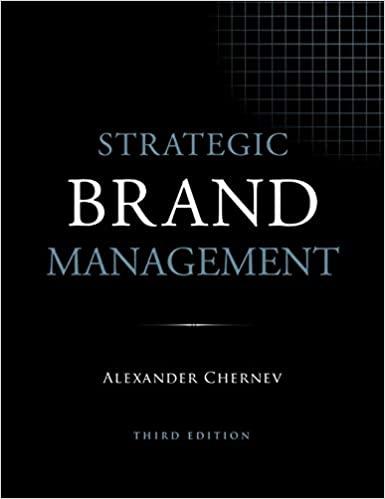Answered step by step
Verified Expert Solution
Question
1 Approved Answer
As a supply chain managing director, it is important to understand the various costs associated with quality management. These costs can be categorized into four
As a supply chain managing director, it is important to understand the various costs associated with quality management. These costs can be categorized into four types: prevention costs, appraisal costs, internal failure costs, and external failure costs
Prevention costs are incurred to prevent defects from occurring in the first place. Examples of prevention costs include employee training, quality planning, and process improvement initiatives. Appraisal costs are incurred to detect defects before they reach the customer. Examples of appraisal costs include inspection, testing, and quality audits. Internal failure costs are incurred when defects are detected before the product is shipped to the customer. Examples of internal failure costs include rework, scrap, and downtime. External failure costs are incurred when defects are detected after the product is shipped to the customer. Examples of external failure costs include warranty claims, product recalls, and legal fees
A Total Quality Management TQM program can be used to enhance quality improvement and avoid these types of costs in the near future. TQM is a management approach that seeks to optimize the quality of products and services by involving all employees in the organization in a continuous improvement process TQM involves a focus on customer satisfaction, employee involvement, and continuous improvement By implementing a TQM program, organizations can reduce quality costs by improving quality and reducing waste
For example, a manufacturing company that implemented a TQM program was able to reduce its scrap rate from to This reduction in scrap rate led to a significant reduction in internal failure costs. The company also saw a reduction in external failure costs due to improved customer satisfaction and a reduction in warranty claims. By focusing on continuous improvement and involving all employees in the process, the company was able to improve quality and reduce quality costs.
In conclusion, a TQM program can be used to enhance quality improvement and avoid quality costs in the near future. By focusing on prevention, appraisal, internal failure, and external failure costs, organizations can identify areas for improvement and implement a TQM program to optimize quality and reduce waste.
Step by Step Solution
There are 3 Steps involved in it
Step: 1

Get Instant Access to Expert-Tailored Solutions
See step-by-step solutions with expert insights and AI powered tools for academic success
Step: 2

Step: 3

Ace Your Homework with AI
Get the answers you need in no time with our AI-driven, step-by-step assistance
Get Started


